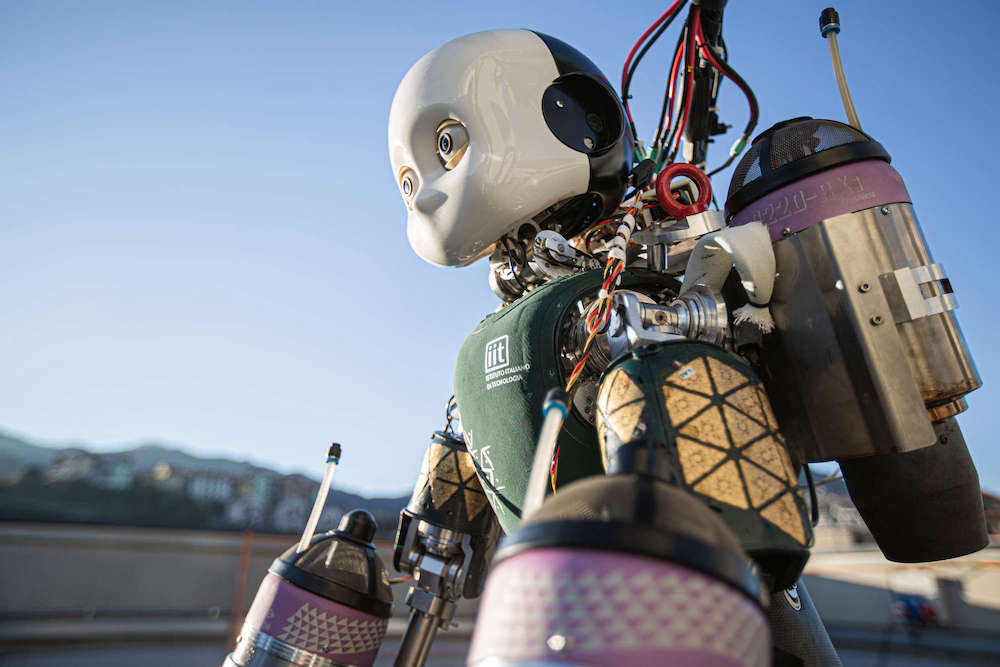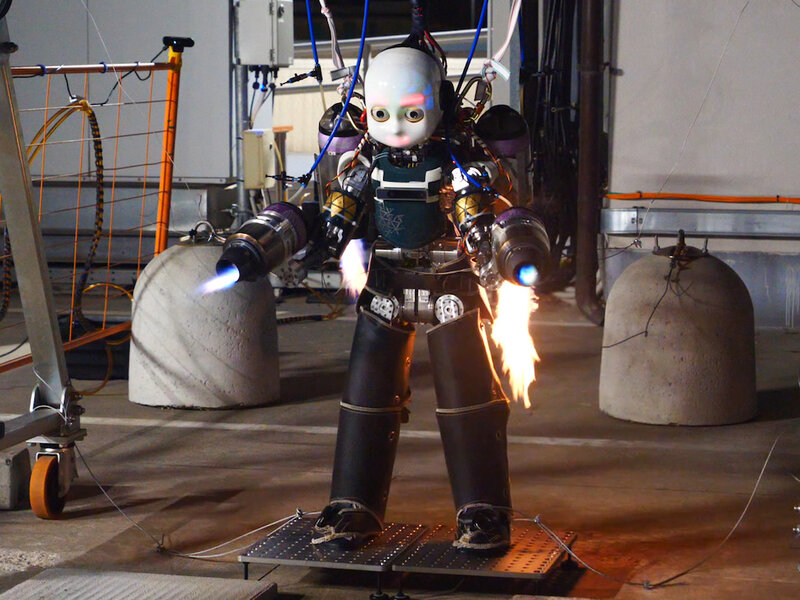Create a free profile to get unlimited access to exclusive videos, sweepstakes, and more!
I am Iron Man! Casper cosplaying robot flies using jetpacks
It would make the Avengers a lot cuter!

Typically, when we see flying robots in movies, we’re in for a bad time. From Terminator’s HK-Aerial to The Matrix’s Sentinels, if a machine is flying toward you, it doesn’t have your best interests at heart. That’s not necessarily the case, however, in the real world.
A team of researchers at the Italian Institute of Technology (IIT) are working toward granting humanoid robots the power of flight, for work in search and rescue missions. At least they’ll look like adorable metal children, instead of attack helicopters or malicious flying squid.
Daniele Pucci from the Department of Artificial and Mechanical Intelligence at IIT, and colleagues, have developed algorithms for the control of thrust forces in a flying robotic system. Their findings were published in IEEE Robotics and Automation Letters.
In a disaster setting, in the aftermath of an earthquake or tsunami for instance, there’s a high likelihood of destroyed buildings partially or completely surrounded by fires or flooding. These environmental conditions further complicate already tense rescue operations. Sometimes, the conditions are such that human rescue teams can’t enter an area where survivors might be present and in need of help. These sorts of scenarios are perfectly suited to robotic intervention, but there are challenges inherent in contemporary terrestrial robots which the team hopes to address through the addition of flight.
“Legged robots struggle with moving and waling on debris and even more in fire or into floods,” Pucci told SYFY WIRE. “Since we have humanoid robots which have a degree of terrestrial locomotion and a degree of manipulation, adding flight may be really effective for disaster response.”
The team is building their work off an existing robot called iCub, which looks a little bit like a certain friendly ghost we all know. The modified version of iCub, complete with a jet thruster on each of its four limbs, has been dubbed iRonCub for what we think are obvious and awesome reasons.
The team settled on jet thrusters instead of an alternative thrust option because of the physical economics of flight. That it looks really cool is an unintentional but welcome side effect.
“The energy density of jet fuel is much higher than batteries powering electrical motors. Humanoid robots are much heavier than drones or quadrotors, so you need an energy source which can provide enough thrust and enough flight time,” Pucci said.
Getting iRonCub off the ground with four small jet engines isn’t much of a challenge. You can lift basically anything if you put enough combustive power underneath it. Getting it into the air and keeping it in the air in a controlled way is where the fun begins. The team is facing similar challenges to any flying craft powered by multiple engines, that of ensuring the right amount of force is coming from the right areas at the right times. The algorithms they’ve developed are intended to help in that regard.
“You have to find a control algorithm for the robot to understand how to place its limbs in order to achieve flight. You have to know the amount of thrust generated by each of the thrusters,” Pucci said. “If one is pushing 2 kilos and the other 10 kilos then you have to regulate them.”
The work the team at IIT is doing also hopes to address more fundamental evolutionary questions like why humans don’t have wings, by understanding the challenges inherent in granting flight to an object with a similar body plan to ours. They’re also working on alternative applications for their control algorithms outside of humanoid robotics.
“We would like to develop these jet-powered boxes which could contain drugs or food and can be deployed quickly into locations hit by disasters. We’re also looking at flying elevators which could get close to buildings, then people could simply step onto them and be brought to the ground,” Pucci said.
Tony Stark might have been able to figure all of this out in a cave with a box of scraps, but the team at IIT and their iRonCub might be the next best thing.



























